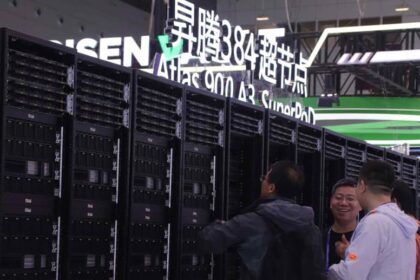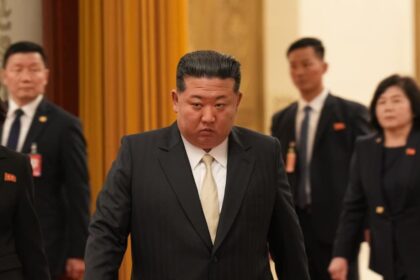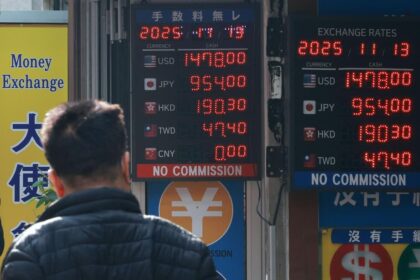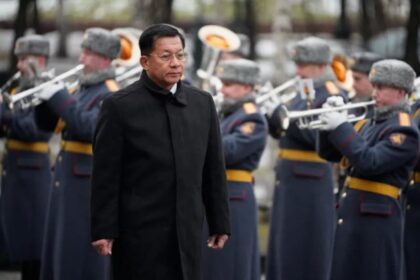India’s Bold Move: BRICS Invited to Trade in Rupees
India has taken a significant step in the global economic arena by officially inviting BRICS nations to settle their trade in Indian rupees, rather than the traditional US dollar. This policy, announced through a circular from the Reserve Bank of India (RBI), allows BRICS members—and several other countries—to conduct all cross-border trade using the rupee. The move is widely seen as an attempt to challenge the longstanding dominance of the US dollar in international trade and finance, while also strengthening India’s own economic position.
- India’s Bold Move: BRICS Invited to Trade in Rupees
- Why Is India Pushing for Rupee Trade?
- BRICS and the Global Push for De-Dollarization
- Geopolitical Tensions: US Tariffs and Strategic Autonomy
- Challenges and Limitations of Rupee Internationalization
- Broader Implications: The Future of Global Trade and Finance
- In Summary
At the heart of this initiative is the RBI’s directive to banks: open more Special Rupee Vostro Accounts (SRVAs) for foreign banks without requiring prior approval. These accounts enable exporters and importers to settle transactions directly in rupees, bypassing the need for dollar conversions. The policy is expected to reduce transaction costs, attract more rupee inflows, and potentially bolster the rupee’s exchange rate.
Why Is India Pushing for Rupee Trade?
The timing and motivation behind India’s rupee trade push are closely linked to recent geopolitical and economic developments. Former US President Donald Trump imposed a 50% tariff on Indian goods and threatened even higher tariffs on BRICS nations if they pursued alternatives to the dollar. These aggressive trade measures have prompted India to seek greater monetary sovereignty and reduce its vulnerability to external shocks.
India’s Prime Minister Narendra Modi and his administration view the internationalization of the rupee as both a strategic and economic response. By enabling trade partners to use rupees for transactions, India aims to:
- Reduce dependence on the US dollar and associated risks from sanctions or trade disputes
- Lower transaction and conversion costs for Indian exporters and importers
- Strengthen the rupee’s role in global finance and trade
- Enhance India’s bargaining power in international negotiations
According to the RBI, this arrangement is similar to correspondent banking mechanisms widely used in global markets. The policy also aligns with India’s broader goal of expanding its economic influence, particularly among emerging economies.
What Are Vostro Accounts and How Do They Work?
Vostro accounts are special bank accounts that allow foreign banks to hold Indian rupees on behalf of their clients. When a foreign company wants to buy Indian goods, it can pay in rupees from its Vostro account, eliminating the need to convert its local currency to dollars first. The same process works in reverse for Indian companies importing goods.
This system streamlines cross-border payments, reduces reliance on the dollar, and makes trade settlements faster and more efficient. The RBI’s recent circular removes previous bureaucratic hurdles, making it easier for foreign businesses to open and use these accounts.
BRICS and the Global Push for De-Dollarization
The BRICS bloc—comprising Brazil, Russia, India, China, South Africa, and now expanded to include Iran, the United Arab Emirates, Ethiopia, and Egypt—has long discussed reducing the dominance of the US dollar in global trade. This process, known as “de-dollarization,” has gained momentum in recent years, especially after the US and Europe used financial sanctions as a tool of foreign policy.
China and Russia have already made significant strides in trading with their local currencies, particularly to circumvent Western sanctions. China’s yuan (renminbi) has seen increased use in global transactions, especially with Russia. Brazil has promoted the use of the real, and now India is actively pushing the rupee as a settlement currency.
However, as analysts at the Carnegie Endowment for International Peace point out, the dollar’s dominance is deeply entrenched due to its stability, liquidity, and the vast infrastructure supporting dollar transactions. Most cross-border trade, even among BRICS members, still relies on the dollar. Efforts to promote local currencies face challenges such as volatility, limited global acceptance, and the need for robust financial infrastructure.
Is India Seeking a Shared BRICS Currency?
Despite speculation and some calls within BRICS for a common currency, India has made it clear that it is not pursuing this path. External Affairs Minister Dr. S Jaishankar recently stated that India has no policy to replace the US dollar as the world’s primary reserve currency. Instead, India’s focus is on expanding the use of the rupee in international trade, particularly with countries facing hard currency shortages or those subject to sanctions.
Dr. S Jaishankar explained at Chatham House in London, “There is no policy to replace the dollar. The dollar as the reserve currency is a source of international economic stability, which is currently a global priority.”
Internal differences and mistrust among BRICS members—especially between India and China—make the creation of a shared currency unlikely. The group is too economically diverse to support a common currency, unlike the European Union. India’s approach is pragmatic: promote the rupee where possible, but avoid direct confrontation with the dollar or the US.
Geopolitical Tensions: US Tariffs and Strategic Autonomy
The backdrop to India’s rupee trade initiative is a period of heightened geopolitical tension. President Trump’s tariffs and threats of further trade barriers have rattled global markets and prompted BRICS nations to seek alternatives. Trump has labeled BRICS as “anti-American” and warned of punitive tariffs for countries aligning against US interests.
These threats have had immediate market effects. The Indian rupee, along with other emerging market currencies, has experienced volatility in response to tariff announcements. According to Reuters, the rupee saw its sharpest fall in three weeks after Trump’s latest tariff threats, reflecting investor uncertainty and the interconnectedness of global markets.
Despite these pressures, India has reaffirmed its commitment to strategic autonomy. Prime Minister Modi has deepened ties with Russia and maintained a careful balance between relations with the US, China, and other major powers. India’s participation in BRICS is seen as a way to hedge against external shocks while retaining flexibility in its foreign policy.
How Are Other Countries Responding?
India’s rupee trade policy is not limited to BRICS. The RBI’s circular has been sent to several other countries, offering them the option to settle trade in rupees. Notably, Indonesia and India have signed a memorandum of understanding to allow bilateral trade in their local currencies, bypassing the dollar. Similar agreements exist with Malaysia, Kenya, Sri Lanka, and Bangladesh.
Indonesia’s recent entry into BRICS and its embrace of local currency trade reflect a broader trend among emerging economies. These countries are seeking to reduce their exposure to dollar volatility and sanctions, promote regional financial integration, and strengthen their own currencies.
After meeting with Indian Prime Minister Modi, Indonesian President Prabowo Subianto stated, “Using local currencies for bilateral transactions will promote trade and deepen financial integration between the two economies.”
However, challenges remain. For example, Russia has accumulated large amounts of rupees from its trade surplus with India but faces difficulties using these funds due to limited convertibility and investment options. The RBI has addressed this by allowing foreign banks to invest rupee surpluses in Indian government securities, but liquidity and acceptance issues persist.
Challenges and Limitations of Rupee Internationalization
While India’s policy is ambitious, several obstacles stand in the way of making the rupee a true global currency:
- Limited Global Acceptance: The rupee is not widely used or accepted outside India, and most international reserves are still held in dollars, euros, or yen.
- Currency Volatility: Emerging market currencies like the rupee are more volatile than the dollar, making them less attractive for large-scale trade settlements.
- Financial Infrastructure: Efficient systems for clearing and settling rupee transactions are still being developed, and global banks may be slow to adopt new processes.
- Regulatory Hurdles: All participants must comply with India’s Know Your Customer (KYC) and other regulatory requirements, which can be complex for foreign businesses.
- Geopolitical Risks: US sanctions or further tariffs could disrupt trade flows and undermine confidence in alternative settlement mechanisms.
Despite these challenges, incremental progress is being made. Allowing foreign banks to invest rupee surpluses in Indian debt, streamlining account opening procedures, and expanding bilateral agreements are all steps toward greater rupee internationalization.
Expert Perspectives: Is This the End of Dollar Dominance?
Most experts agree that while India’s rupee trade policy is significant, it does not pose an existential threat to the dollar’s dominance—at least not yet. The dollar remains the world’s primary reserve currency, accounting for the majority of global trade, energy transactions, and central bank reserves. Its stability, liquidity, and the depth of US financial markets make it difficult to dislodge.
As noted by analysts at the Carnegie Endowment, “Dedollarization faces significant obstacles, including the dollar’s entrenched role in trade, finance, and reserves, as well as the limited infrastructure for settling non-dollar transactions.”
India’s approach is best understood as a gradual assertion of monetary sovereignty and a hedge against external risks. By promoting the rupee in specific contexts—such as trade with sanctioned countries or partners facing dollar shortages—India is building the foundations for a more multipolar financial system.
Broader Implications: The Future of Global Trade and Finance
The shift toward local currency trade among BRICS and other emerging economies reflects deeper changes in the global order. The use of financial sanctions by the US and Europe has accelerated efforts to find alternatives to the dollar. Central banks are diversifying their reserves, increasing gold holdings, and exploring new payment systems.
BRICS, now expanded to ten members, is positioning itself as a counterweight to Western-led institutions. The group has established the New Development Bank, launched initiatives like BRICS Pay, and is actively discussing reforms to the global financial system. However, internal divisions—especially between India and China—limit the bloc’s ability to act as a unified force.
For India, the challenge is to balance its ambitions for greater economic influence with the need to maintain strong ties with the US and other major economies. The rupee trade initiative is a calculated move: assertive enough to signal India’s rising status, but cautious enough to avoid direct confrontation.
In Summary
- India has invited BRICS and other countries to settle trade in rupees, aiming to reduce reliance on the US dollar and strengthen its own currency.
- The RBI has made it easier for foreign banks to open Special Rupee Vostro Accounts, streamlining cross-border rupee settlements.
- This policy is a response to US tariffs and broader geopolitical tensions, but India is not seeking to replace the dollar or create a shared BRICS currency.
- BRICS nations are pursuing de-dollarization, but internal divisions and practical challenges limit the impact.
- India’s rupee trade push is part of a global trend toward monetary sovereignty and multipolarity, but the dollar remains dominant for now.
- The future of global trade will depend on the evolution of financial infrastructure, geopolitical shifts, and the willingness of countries to adopt alternative currencies.












